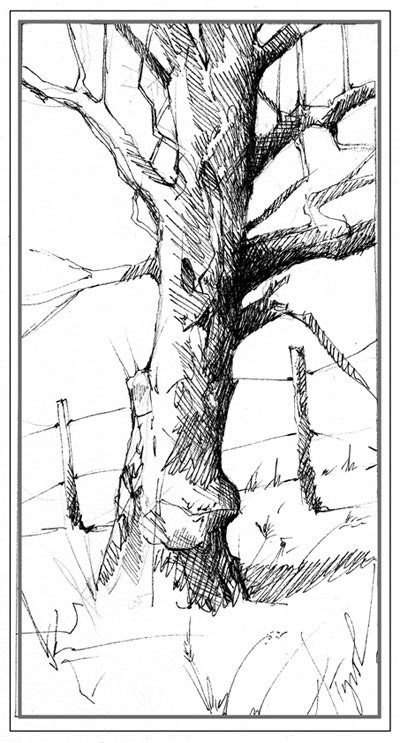
Many times I’ve been wandering through dense forest only to stumble on human artifacts like old cellar holes, a well, or rusting farm equipment. Then there are the miles of stone walls running through mature woods.
These artifacts are a humbling reminder that we’re not the first to come this way. Most of what remains from the abandoned homesteads is of the durable iron and stone variety, not the organic. But sometimes in the New England woods you stumble across evidence of human presence that’s very much alive: apple trees.
Apples are central Asian natives whose usefulness led humans to plant them around the globe. European colonists brought them to the New World in the early 1600s.At one time, almost every New England farm had a few apple trees.
The woods are dotted with relict apple trees – old, gnarled trunks hollowed by rot, leaning over as though tired. You could, naturally, assume that these trees were planted and once lovingly cared for, and most of the time you’d be correct. But, given that apples are pretty well naturalized in the U.S., how can you be sure?
Well, there are a few ways, and with a little observation and application of common sense, you should be able to tell with relative certainty, said John Bunker, the apple guy at Fedco Trees in Waterville, Maine. Bunker has spent more than 30 years learning about, promoting, identifying, and propagating apples.
One (almost) sure-fire way to tell a wild apple tree from a domestic one: “Look for the graft,” said Bunker. Often on trees that are 100, 150, or even 200 years old, the graft union is still very visible near the base of the trunk, he said.
An apple seed will not produce a faithful reproduction of its parent tree (in the same way that you’re not your father’s identical twin), so orchardists use grafting to propagate desirable varieties. It’s an old technique: the Chinese were doing it 4,000 years ago. Grafting involves replacing the growing shoot of a two-year-old “rootstock” tree with a piece of branch (the scion) from the desired variety. Cuts are made in scion and rootstock and the two pieces carefully spliced together with the cambium layers touching. The graft is usually wrapped with stretchy grafting tape.
At the graft union, there’s usually a noticeable bulge or a depression in the trunk. “That is because the scion and the rootstock didn’t have the same vigor,” explains Bunker. Often the bark color is different on either side of the graft line, denoting the two varieties joined there.
Bunker cautions that sometimes you can find a grafted tree where the scion and rootstock were so close in vigor and bark color that the graft line isn’t apparent. In such cases, another clue is the pattern of the branches. Are they regularly spaced? Are there old pruning scars or pruning cuts? Does the tree look like it’s been shaped? “If you look at where the holes are, where the branches used to be, you can put together a picture of what that tree once looked like,” Bunker said.
Are there other trees, or even stumps of apple trees, in the area? Two, three, or four trees of nearly the same age planted in a grid makes it more likely that these are the products of nurture, not nature. Similarly, Bunker says to consider the location. “Even knowing nothing about grafts or pruning, most woodlot owners could ask themselves, ‘is it possible someone ever could have planted an apple tree in this spot?’ and answer correctly, yes or no.”
Another clue: How does the apple taste?
Of course, there are times when nature – and man – throws you a curve. Say there’s no sign of the graft, but the tree looks like it’s been shaped and it’s in a spot where there could have been an orchard. Well, it might be a wild apple tree. Or it might be a seedling apple that someone planted. New Englanders did that a lot, particularly back in the early 1800s when most apples were used for making hard cider. Or it could be part of ‘nature’s orchard’ – an orchard where all of the original planted trees are gone and only their feral seedlings remain.

